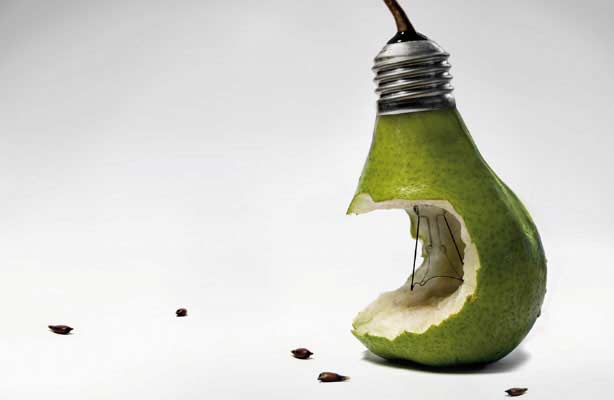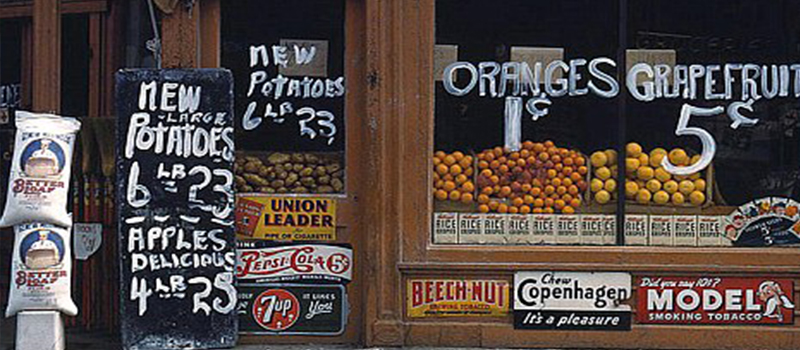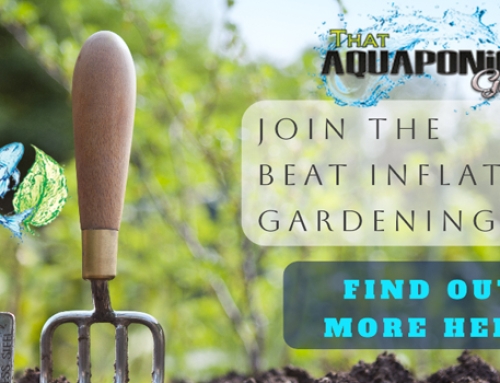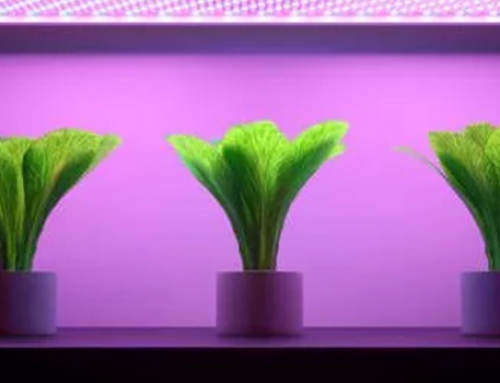Countless Americans desire to be more independent with their food, which is great for the environment. One study found that 35% of Americans grow their own food. This figure has increased 65% in the past decade.
This is good for the environment. US Green Technology has published an article on some of the environmental benefits of gardening.
Some of the environmental benefits of growing your own food are more obvious. Gardening produces plants that clean the air and cool the atmosphere. They also reduce your carbon footprint in more subtle ways, such as reducing the need for aggressive, environmentally reckless farming practices and minimizing the need to transport food.
Green living advocates are encouraged by the growth of people that are gardening. The figure would probably be even higher, except some people in the cities don’t realize it is possible to grow food themselves. The truth is that it is possible to be a green, urban gardener!
But This Isn’t Something New
Some people may think that this green movement is a new thing that has happened with all this climate change crap that political types are slewing around. Being “Green” is as old as farming itself. It was the only way to do farming! You had to use what nature would give ya, in the times and seasons it gave it to you, and nothing beyond the metal tools and equipment our ancestors used was something that wasn’t considered green and organic.
There are farming books from the 1870s that can rival those hoity-toity academic papers on what we need to be organic and sustain our green thumbprint. We will be bringing you more of those in the near future for your library.
Growing Your Own Food the Eco-friendly Way
As we are in our current circumstances, with the world as it is, are you thinking of living sustainably and growing your own food, but feel like you are confined in a small plot that has you doubting your ability to so? Well, we have good news for you.
It’s possible. Yes, even on that small space in your backyard!

While limited space can be frustrating to every sub-urbian farmer, it is still possible for you to grow your healthy natural food right in your backyard. You don’t need to own huge parcels of land to start backyard farming. Growing carrots, onions, and rich colorful juicy strawberries are possible. Good news, right?
Because… let’s take off the lipstick of this pig.
The current food system is nothing but pumped up with GMO produce and heaped up with hormones that optimize the yield, or the cut available to go to market! The situation is so bad that organizations like the Centre for Research on Globalization have pegged Monsanto as the evilest company in the world. The food we are consuming (in general) is not only unsustainable but also unhealthy. It isn’t a coincidence that all these new chronic sicknesses have sprung up as the use of these genetically engineered food products has grown. Most of the severe health problems people are experiencing are caused or exacerbated by consuming highly processed foods and foods produced using chemical-intensive farming practices.
So if you are willing to escape the ugly part of our food system by growing your own organic, rich in nutrients food, you need to consider backyard farming.
Uhm…So… What is backyard farming?
A backyard farm can take many forms and despite the actual term, it doesn’t always have to be in the backyard. It can be anywhere you have space. The general sense of the term is the growing and rearing of a mini or micro piece of land (space), mostly within your neighborhood or backyard or even on your kitchen counter for personal consumption.
Backyard farming takes an active approach to farm crops organically, whichever method you want to use Aquaponic, Hydroponic, or Permaculture, as opposed to buying crops that have been grown and preserved with chemicals. It’s more of taking deliberate action to grow your own nutritious vegetables and fruits and developing an organic and sustainable food system.
And, how much space is needed? Is it possible to grow this food without harming the environment?
You can start as small as a few containers on a balcony to a few acres on your backyard plot. In fact, a smaller area is much more manageable and productive. So, start with the current space you have. Start small.
What foods can I farm in my tiny space?
Here are a few easy crops you can grow in your backyard without having to quit your job to do and take care of.
Vegetables vs. Fruits
Vegetables are the most sought-after plants in most sub-urbian farms. And it’s for a good reason. They are the quickest to grow to harvest. Their gestation and growth are within a 3 to 4 month period. The vegetable plants are usually smaller and have multiple starts on each plant that grows exponentially. And they save you the hassle of having to drive every few days to the grocery store to purchase veggies from questionable sources or highly overpriced “organic” ones.
Versus Fruits. Beyond the right berry bush or plant (Strawberries are detailed below) the time for the growth of these plants, shrubs, and trees is a bit longer, usually a few years longer. With that in mind, especially the bushes and the trees are needing larger spaces to spread their branches and roots. They need special attention (because they are located primarily outside) against, weather, pests, and diseases that come along. Not to mention the pollination that needs to happen with most fruit trees.
I am all for a fruit tree or two… but seeing results with veggies is much quicker
Farming vegetables on small yards
- Container permaculture gardening
If you have a tiny yard or live in an apartment, consider container gardening. Container gardening is an excellent choice for people looking to save space or even do indoor farming. While vegetables require constant watering, container gardening saves you water, thus you don’t have to water very frequently. You can also try raised square beds. Square gardening offers better yields for small space gardens.
- Vertical permaculture or hydroponic gardening
The current trend of sub-urbian farming is vertical gardening. Whether it is with regular soil, and stringing the vines (beans, melons, grapes, etc.) Or via hydroponics that works without soil but nutrient-rich water. You can create your own vertical garden using shelves, trellises or even hanging baskets. Just like container gardening, vertical gardens are water efficient and can do well even in a small space.
- Container aquaponics gardening
If you have a tiny yard or live in an apartment, consider aquaponic gardening. These closed ecosystems are a fantastic choice for those who don’t have access to a lot of outdoor space. While vegetables require constant watering, you can have your garden and eat it too.
How to prepare your soil for sub-urbian permaculture
1. Conduct soil testing for better results
As an sub-urbian backyard farmer, if there is anything that can limit your plant’s growth its your soil being out of balance i.e. too acidic, or alkaline, not enough nutrients, etc. In close quarters farming, the composition of nutrients in your soil matters a lot. It is important, therefore, that you have your soil tested for all-important soil properties and trace minerals.
2. Raise soil beds
Soil beds help in promoting good drainage in your backyard. Soil depth and management of your crops also become easier. A 30cm soil depth is adequate for your soil bed.
3. Use natural fertilizer
To further improve your soil composition, you need to add manure and organic fertilizers. Here are some of the organic soil additives you can use for the best results:
- Chicken manure
Add chicken manure at a rate of one handful of chicken manure per square meter. Chicken manure is rich in nitrogen and phosphate. It also has good amounts of calcium and potassium. Alternatively, you can also add, sheep or cow manure supplemented with sulfate potash to boost levels of potassium in your soil.
- Blood and bone- This is rich in phosphate, nitrogen and trace minerals.
- Good quality compost
4. Mix thoroughly
Mix it all thoroughly with a fork to achieve an even mixture of compost and soil.
5. Add trace elements
For optimum productivity supply your vegetable crops with a diluted seaweed concentrate. Seaweed concentrate supplies your vegetable crops with a wide range of trace elements.
6. Cover your crops with mulch
Cover your crops with 2-3 inches of mulch.
7. Let it settle
Give your farm a few weeks to settle before you plant your vegetables. You can also be propagating your vegetable seedlings as you wait for the garden to settle.
Fruits and berry-bearing produce
An alternative to vegetables are fruits, nuts, and berries. Here are some of the most common fruits you can grow in a small yard;
- Strawberries
These are a classic and a favorite for many backyard farmers. With proper care and attention can easily thrive in jars and containers.
- Grapes
Grapes are an easy crop to grow. However, you will face stiff competition from birds and animals when harvesting. They also need a trellis or some type of support to grow. Growing them on an arbor makes it easy to prune them and keeps them from outgrowing your small space.
- Blueberries
Blueberries require a bit of attention to soil acidity. However, when well maintained, the shrubs can live to produce year after year.
- Beans – String beans
String bean plants are great for vertical and close quarters growing and work well in aquaponics systems as well.
- Peas
Peas, snow peas, and several other types of peas are great ways to bring in the produce to eat.
Don’t let the lack of space stop you. Be creative and just farm whatever works best for you and what you love to eat most. At the end, it all boils down to living a healthy sustainable lifestyle while saving money in the long run.






